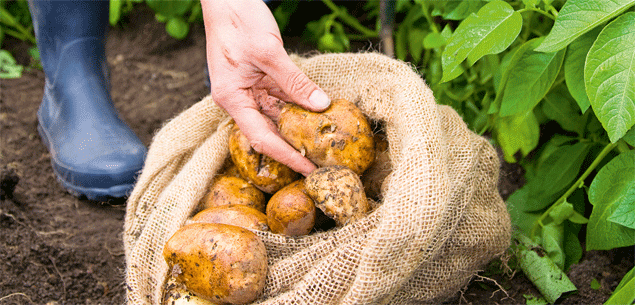When she patronisingly explained that you grow potatoes from seed, I snobbily responded that I wasn’t that interested in growing them anyway, because they were too common. “I’d rather grow celeriac and fennel bulbs,” I said loftily.
Well, I’ve never grown celeriac or fennel bulbs, at least not on purpose, but I am a complete convert to potatoes, and common they are not.
My first effort at cultivation was, however, a complete failure. I planted them in a barrel in the courtyard – and within about a minute, they’d made a whole heap of lovely green leaves. Brilliant, I thought, throwing in more and more compost and watching as the foliage shot up to the height of the courtyard wall. Then, when they were about as tall as me, they wilted and fell over. Ready to harvest, I thought. I dug them out and searched the barrel for Christmas spuds. Three. Smaller than golf balls.
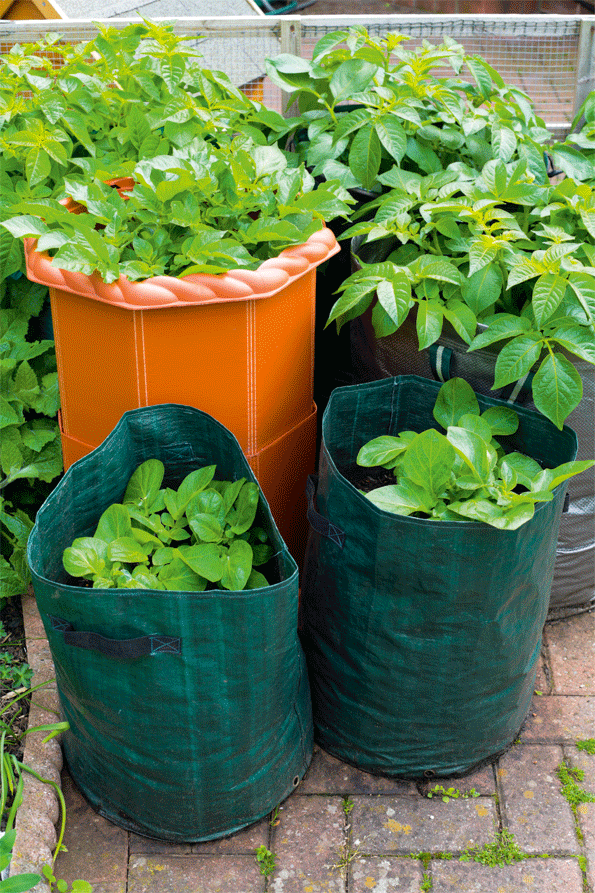
You don’t need a huge garden – potatoes grow just as well in bags, pots or planters.
As my ex-mother-in-law would gleefully tell you, any fool can grow spuds. They’ll thrive just as well in a bag or a pot as a seriously large vegetable patch, and their needs are few.
Happily, I’ve got the hang of it now, and The Partner and I have had many an annual tussle over which varieties to grow. He usually wins – probably because he’s a bit of a spud connoisseur, while I’ll eat anything that has melted butter on it.
1.Don’t be greedy – choose middle-sized models about the size of an egg. Put them in a tray or an egg carton with the eyes (buds) facing upward, keep them warm in a light room, and wait until the shoots are about 2cm long before planting them out. And no, those ancient green ones sprouting in the bottom of your vegetable drawer will not do. You can buy seed potatoes for planting from a garden centre.
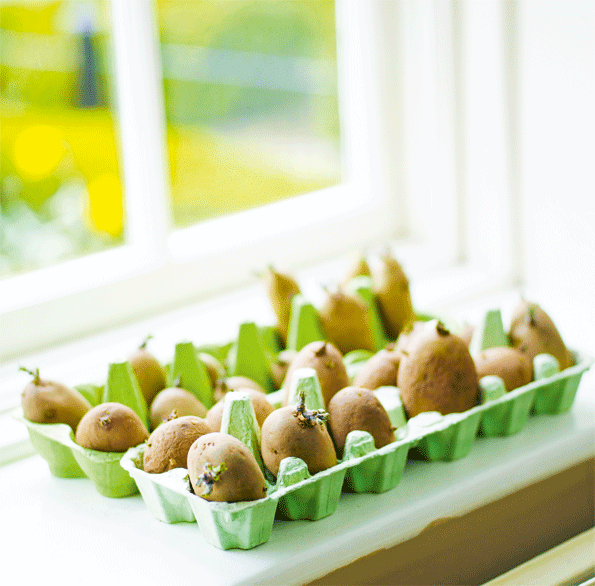
It’s important to buy certified (diesease free) seed potatoes to start your crop.
2. Like me, potatoes are hungry. Unlike me, they prefer rotted organic material, so dig plenty into your soil before you plant. Don’t plant them where last year’s crop was, and not where your tomatoes were either. Provide some deep, rich, free-draining soil, dig trenches about 15cm deep (and maybe 60cm apart if you have more than one) and space about 30cm apart. Cover with a low ridge of soil and wait.
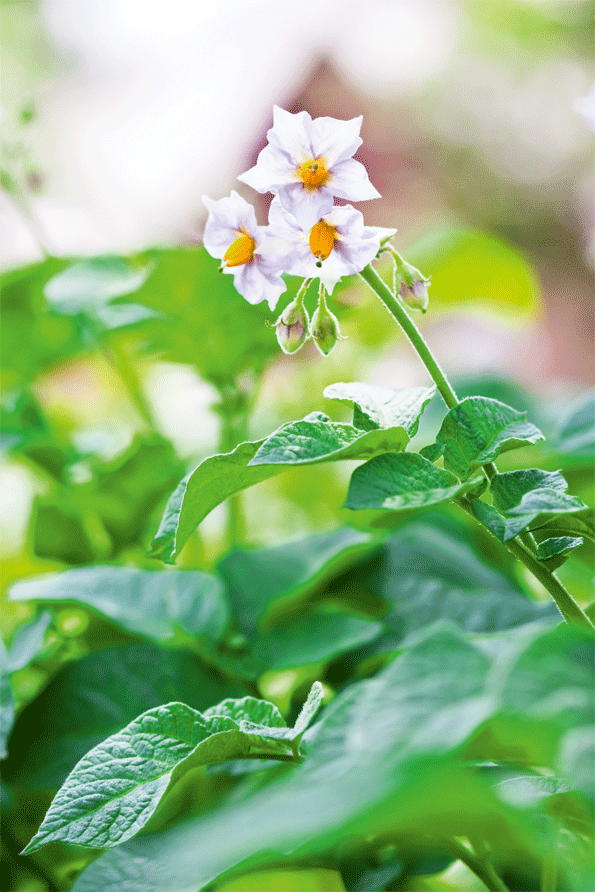
Your plant has to flower for you to get potatoes. When the flowers die off and the leaves wilt, it’s time to start digging.
3.Now, here’s the heartbreaking part – the trick I didn’t know when my first barrel of plants failed to deliver. As soon as the shoots push through the soil, cover them up, leaving just a few centimetres of new leaves poking out. And keep doing it. Potatoes like the dark and the damp, so “earth up” about once a week, and water regularly when it’s dry. Resist the temptation to dig around to see if they’re growing. It’ll be 10 to 12 weeks after planting before any will be ready. You’ll know you’ve done everything right when they start to flower. Then, when the little white flowers die off and the leaves wither, you can start harvesting. Use a fork, not a spade – unless you want them pre-sliced for chips.
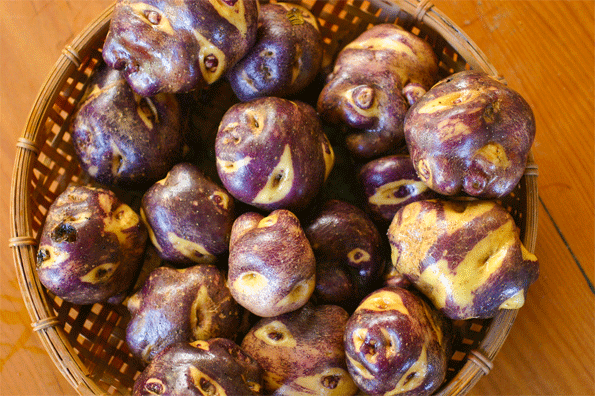
Kowiniwini – The lumpy purple skin of this variarty hides golden flesh.
Embrace variety
Potatoes are a fairly quick study, so become an expert and you can advise friends who are novice gardeners on what to grow. If you prefer to eat your spuds boiled or mashed, choose a variety like Swift, Rocket, Nadine, Moonlight or Jersey Benne. Chips and roast spuds more your thing? Then it’s Ilam Hardy, Desiree, Red Rascal and Agria. Karaka is the top all-rounder, a high cropper, fairly disease resistant, and a great flavour, however you cook them. If you have space, plant at least a couple of varieties so you can compare qualities.
